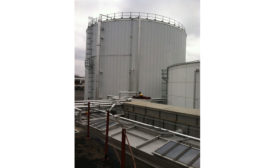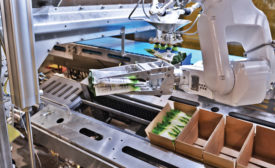Home » sustainability
Articles Tagged with ''sustainability''
Nestlé also introduced reusable ice cream packaging.
Read More
Dairy businesses, farms recognized for sustainable farm-to-table practices
The winners of the seventh annual U.S. Dairy Sustainability Awards were selected based on efforts toward continuous improvement in sustainability.
May 17, 2018
How dairy processors can reduce water waste
Dairy processors could look to new technologies to address water sustainability challenges
May 14, 2018
Dairy industry need to step up sustainability efforts
The dairy industry is committed to reducing its environmental impacts, but it could do more
April 5, 2018
HP Hood facility reaps benefits from anaerobic digestion plant
The system removes 99% of organic waste material from high-strength dairy production wastewater.
January 19, 2018
Dairy Sustainability Framework launches five new global indicators
The indicators are for public reporting on sustainability in the dairy value chain.
November 22, 2017
Reap the benefits of sustainable milk packaging solutions
Smarter packaging solutions not only are durable, cost-effective and recyclable, but also use less energy and water and emit fewer greenhouse gases.
October 23, 2017
Sustainability becomes more sustainable in dairy
Companies are going ‘green’ with energy and water conservation, package reductions and more.
October 4, 2017
US-IDF endorses Dairy Declaration of Rotterdam
The declaration signals recognition of the dairy sector’s commitment toward feeding the world with safe, sustainable products and enhancing sustainability.
September 29, 2017
Recapture the energy from cranes and conveyors in dairy plants
Cranes and conveyors do more than move cartons and pallets of dairy products. They are sources of electrical energy that can be captured and redeployed in a dairy processing plant.
September 13, 2017
Stay ahead of the curve. Unlock a dose of cutting-edge insights.
Receive our premium content directly to your inbox.
SIGN-UP TODAYCopyright ©2025. All Rights Reserved BNP Media.
Design, CMS, Hosting & Web Development :: ePublishing









